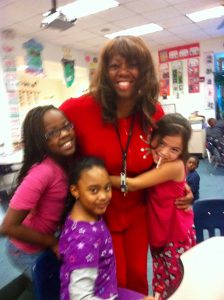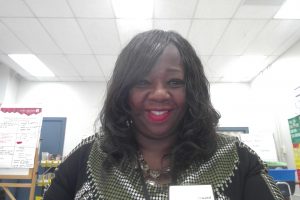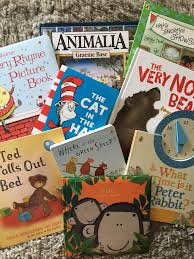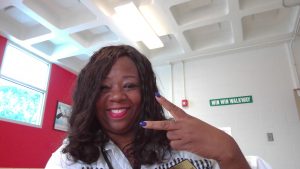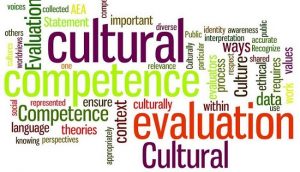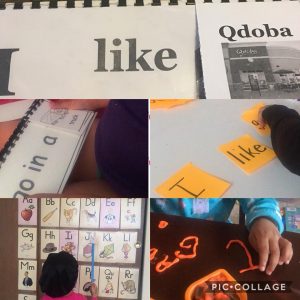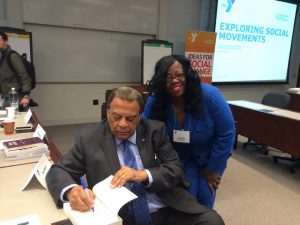
My Black History Moment – Meeting a Living Legend
Andrew Young Jr.
I had the opportunity to attend a symposium taught by the living legend Andrew Jackson Young Jr. I was in awe to be in the presence of such a Civil Rights Leader that worked directly with Dr. Martin Luther King Jr. Although I was 51 years old, my admiration for this hero transformed me into a giddy 16-year-old. I couldn’t stop smiling and I couldn’t speak at the same time.
Mr. Young was teaching a symposium for the YMCA at Washington University. I was extended the invitation by Mr. Larry Rosen the coordinator of the event. I had the opportunity to sit at the head table with him. He was very gracious, endearing, and ever so sweet. I had to fight the urge to cut his food on his plate and get the food off his tie as he enjoyed the scrumptious meal. Although I was a foodie, I was so nervous, I couldn’t eat because I hung on his every word. I apologized for staring, and he said, “You lived in St. Louis, right?” I replied yes. Then he began to ask me about the riots in Ferguson, Missouri. I had to drink some water to gather my voice and speak. I shared my perspective, then he shared history with me. He talked about things that can cause unrest in a race of people and how everyone has a civic duty to make their communities better. Then, he shared stories with me about Dr. Martin Luther King Jr. and other Civil Rights Leaders who had transformed society. He continued our discussion by sharing how he helped Atlanta gain economic empowerment during his tenure as mayor.
I was so elated to share time with this living legend. I shared our picture on social media. One comment I received was, “Vanessa who was that old man that you took a picture with?” This comment was made by an educated African American. My draw dropped, and I had to depart some history knowledge on my friend. This was also disheartening to me because it means that somewhere along the line we have forgotten to pass along our history to a generation. My mind began to reflect how Dr. Martin Luther King Jr’s legacy has been reduced to the initials letters (MLK), and Black History Month is celebrated for one day or not at all. So, to my young brothers and sisters, I want to introduce to you Mr. Andrew Young Jr.
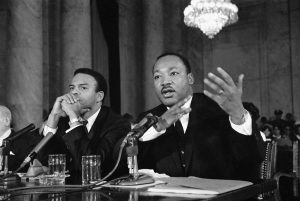
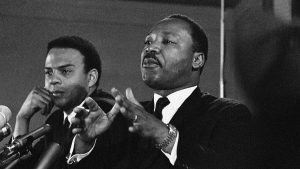
Andrew Young
Andrew Young, Jr., came into prominence as a civil rights activist and close associate of Dr. Martin Luther King, Jr., during the modern civil rights movement in the United States. Young worked with various organizations early in the movement, but his civil rights work was largely done with the Southern Christian Leadership Conference (SCLC) where he served as an executive director and later executive vice president. Young served on the Board of Directors until 1972.
Young earned a B.S. degree in Pre-Med (biology) from Howard University (1951) but chose to become a minister. He attended Hartford Theological Seminary and graduated with a degree in divinity in 1955. Soon afterward he became a pastor at Bethany Congregational Church in Thomasville, Georgia. In 1961 Young resigned his pastoral position and joined the Southern Christian Leadership Conference (SCLC), which had been founded in Atlanta by Dr. Martin Luther King, Jr. three years earlier. Young quickly emerged as a trusted lieutenant of King and served as a principal strategist and negotiator during the Civil Rights Campaigns in Birmingham and Selma, Alabama that resulted in the passage of the Civil Rights Bill of 1964 and Voting Rights Act of 1965.
In 1972, Andrew Young became the first African American elected to the United States Congress from Georgia since Reconstruction. Young served as a twice-re-elected Congressional Representative from the 5th district from 1973 to 1977. After the election of fellow Georgian Jimmy Carter as President in 1976, Young was appointed by Carter to serve as the US Ambassador to the United Nations. There, Young was a consistent critic of white minority rule in South Africa and Rhodesia (Zimbabwe). His support for liberation movements in both nations led him to make statements critical of Great Britain and other American allies for their role in supporting the regimes. Young was forced to resign, however, after meeting with leaders of the Palestinian Liberation Organization (PLO) in 1979, which was at that time designated a terrorist group by the United States government.
In 1981 Young was elected Mayor of Atlanta and served in this capacity until 1990 when he ran unsuccessfully for Governor of Georgia. During his tenure as Mayor, he brought the 1996 Olympic Games to Atlanta.
Source: https://blackpast.org/aah/young-andrew-1932
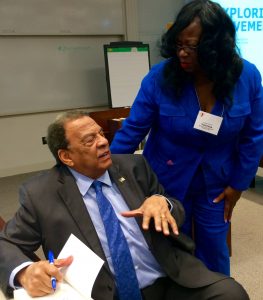
Civil Rights Leader
Andrew Young
“My hope for my children must be that they respond to the still, small voice of God in their hearts.”
